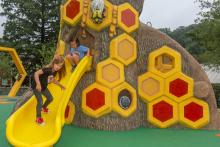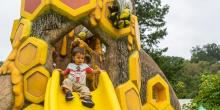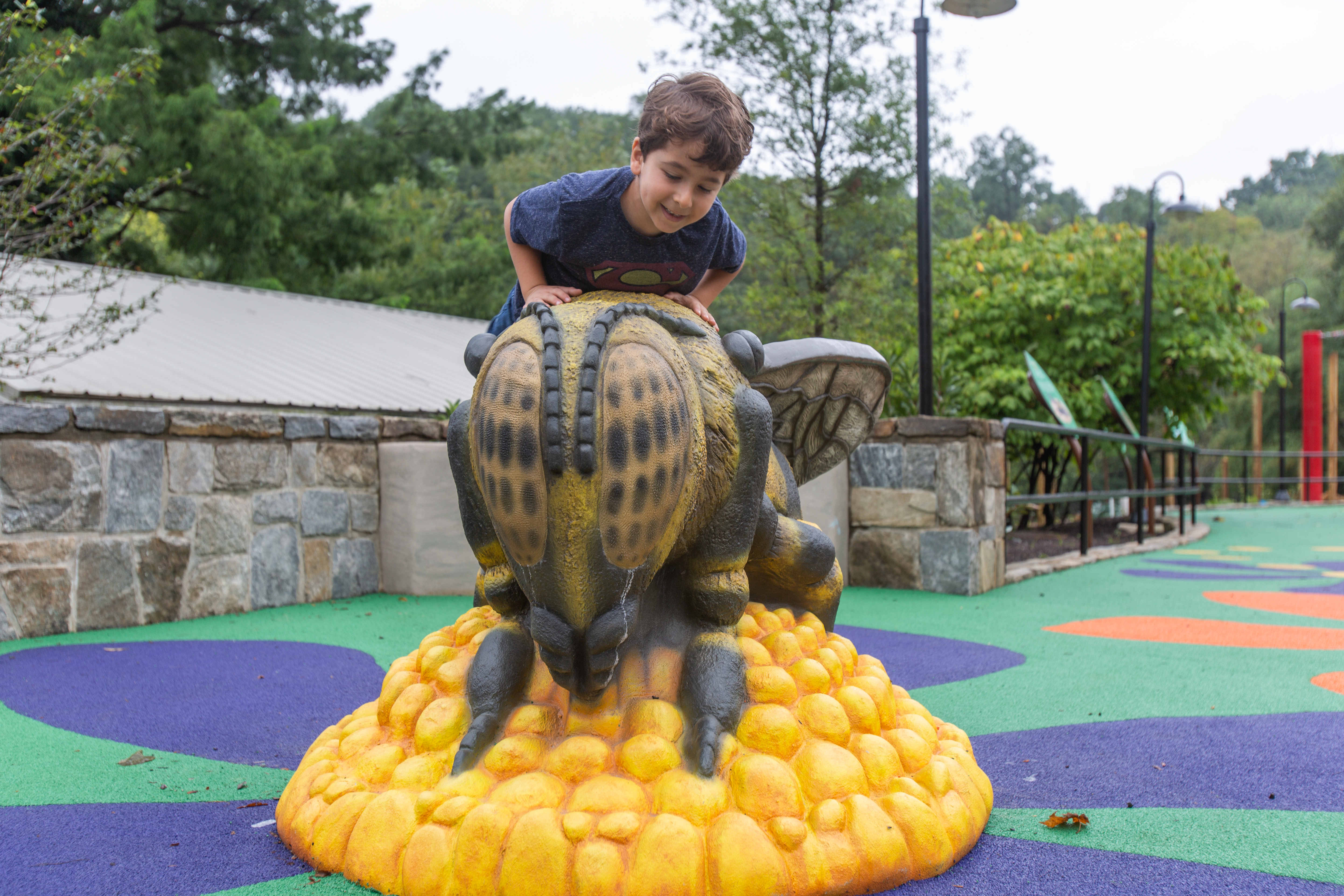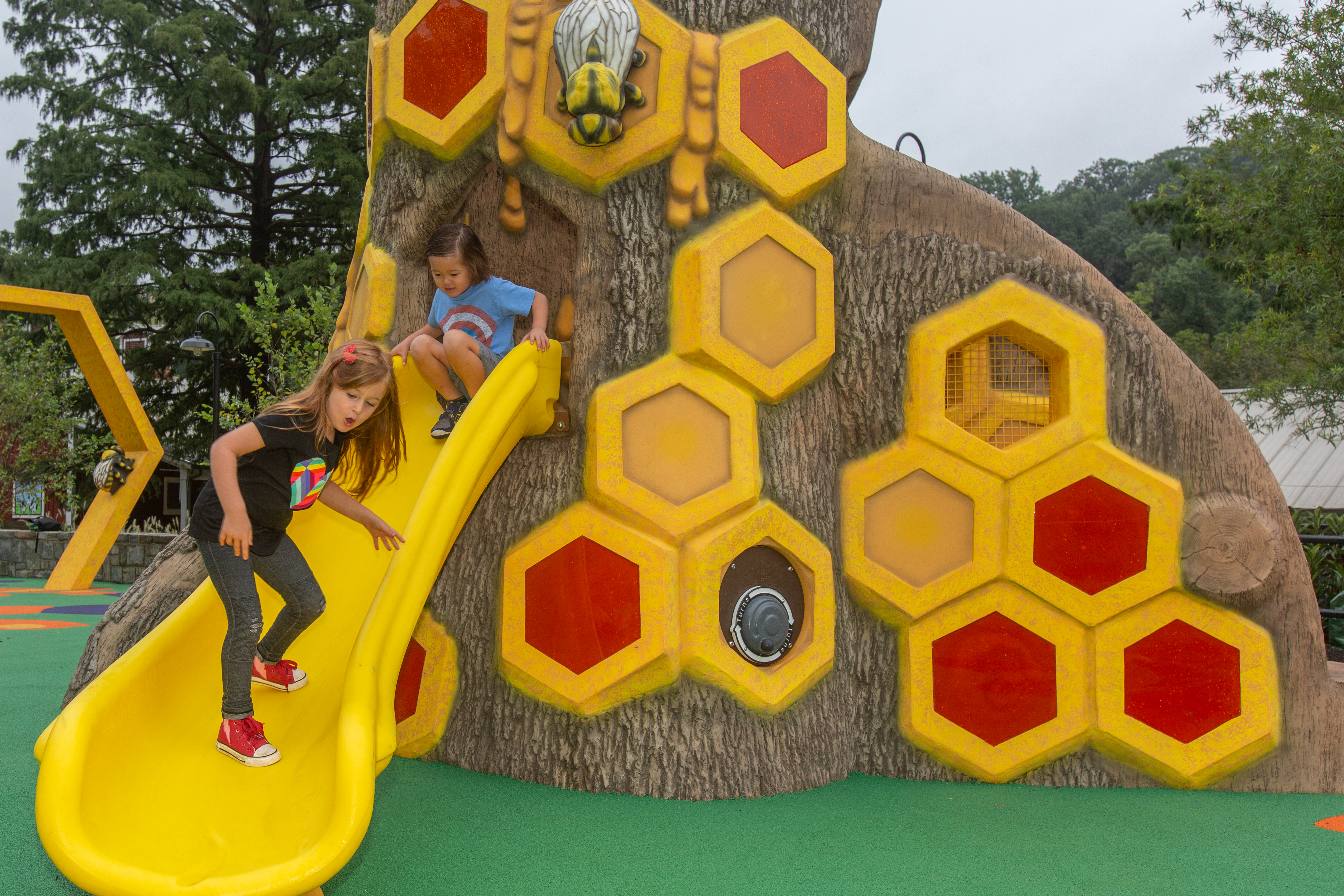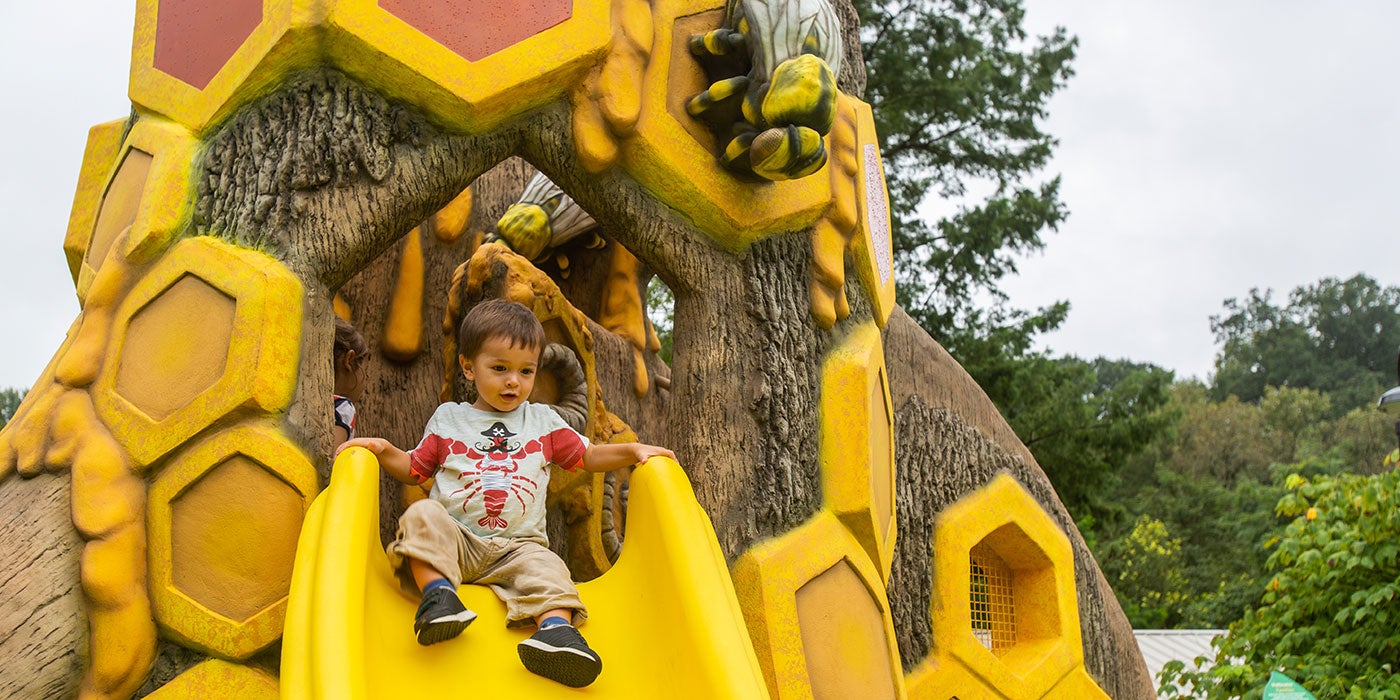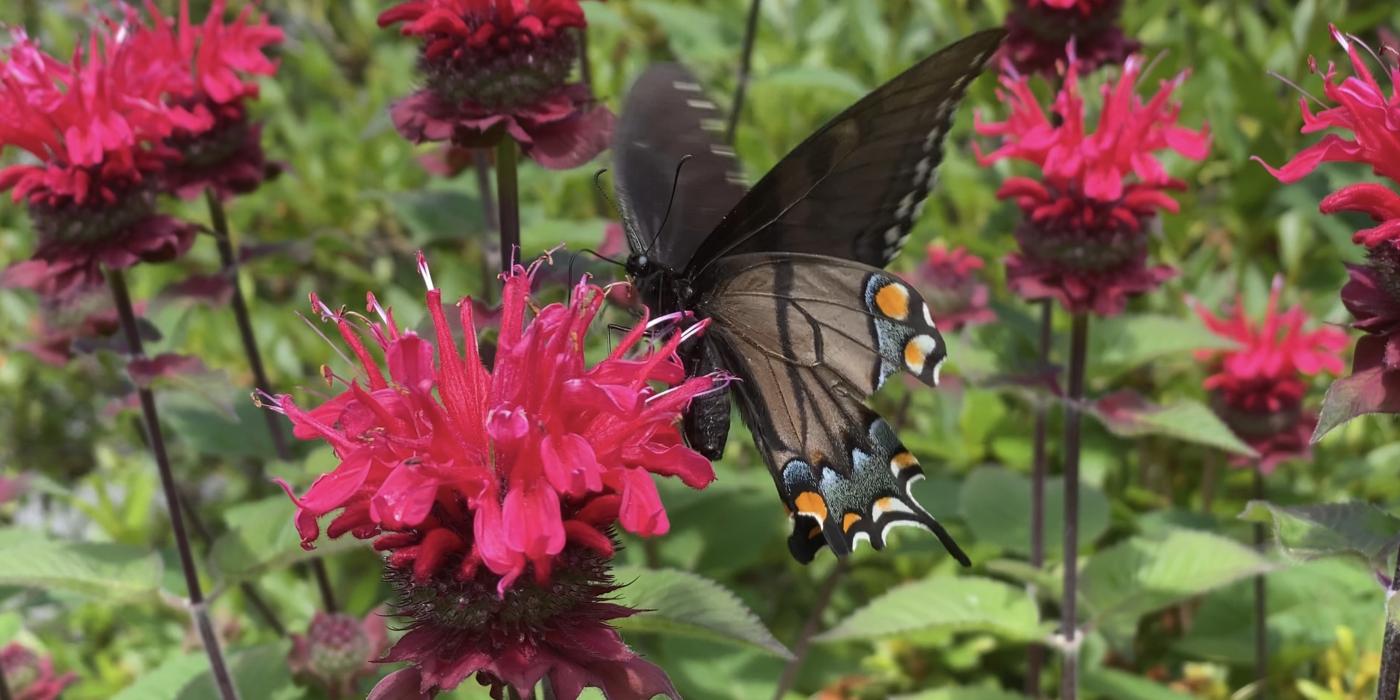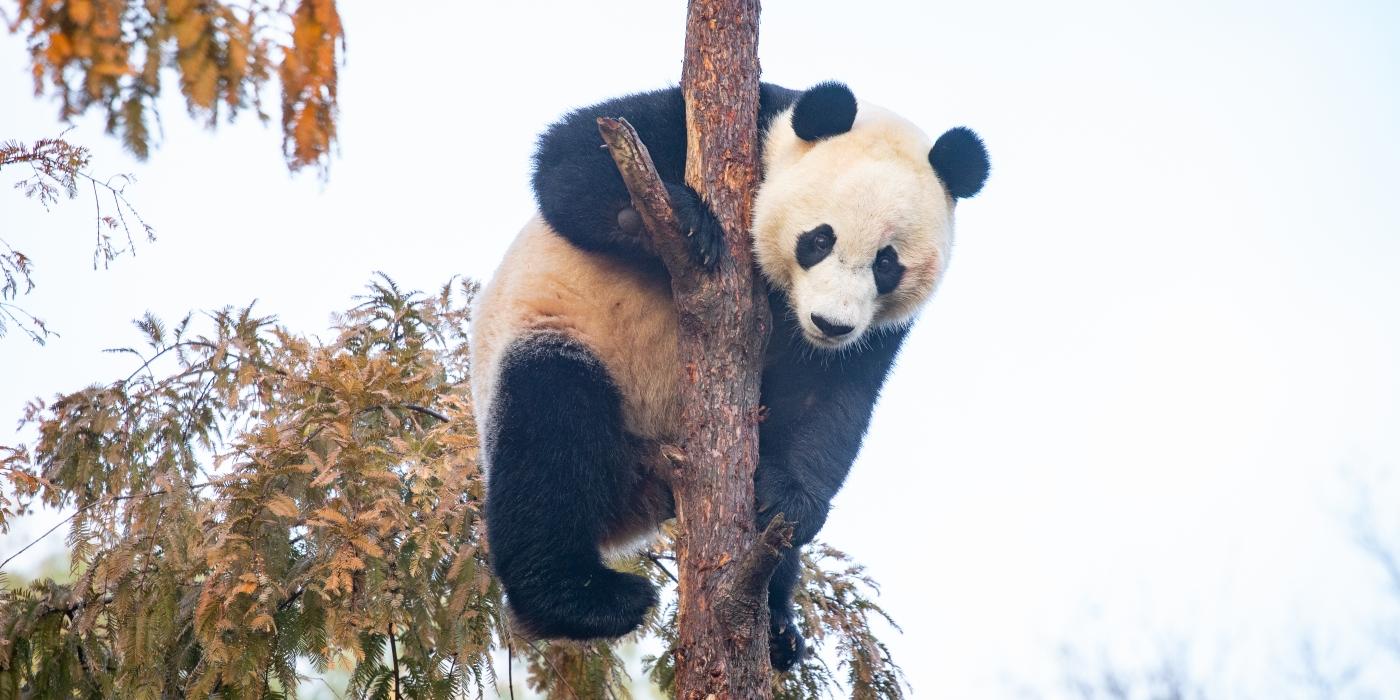THE BUZZ–Me and the Bee Playground Now Open at Smithsonian’s National Zoo
The Smithsonian’s National Zoo is buzzing over a new pollinator-themed playground: Me and the Bee, sponsored by Land O’Lakes Inc. Adjacent to the Kids’ Farm and Conservation Pavilion, Me and the Bee encompasses 4,900 square feet of space where children of all ages can climb atop honeycomb steps, slide down a tree stump overflowing with golden honey and crawl inside hollow trees where bees make their abodes. The playground was made possible by support from farmer-owned cooperative Land O’Lakes Inc. Open to the public during regular Zoo hours, Me and the Bee is an inclusive playground with ADA-accessible features.
The Zoo is throwing a “pollinator party” to celebrate the opening of the playground from 11 a.m. to noon Sunday, Sept. 23, as part of ZooFiesta, a free public event from 11 a.m. to 3 p.m. that includes live music and educational activities, including animal demonstrations, about conservation in Central and South America. The first children to visit the playground will receive a bee antennae.
“Land O’Lakes’ gift will teach future generations of zoogoers why wildlife matters, including the pollinators we find in our own backyards,” said Steve Monfort, John and Adrienne Mars Director, Smithsonian’s National Zoo and Conservation Biology Institute. “In Me and the Bee, we have created a magical and fun experience that will show children and their families how bees live, their important role in the food chain and how they affect the health of an ecosystem. I hope this attraction inspires visitors to appreciate these animals and take action to conserve them.”
Zoo visitors will “shrink” to the size of a bee and step through a honeycomb to discover larger-than-life-sized figures of European honeybees and blue orchard mason bees. The rubberized play surface is painted with yellow pollen particles, which children can follow from decorative flowers to the bees’ hives. Adding to the immersive experience are two interactive sound projectors; children can turn a rotary crank to hear a group of buzzing bees or push a button to hear a variety of pollinators, including hummingbirds, bats and insects. Honeycomb steppers—platforms for climbing, jumping and resting—are painted to mimic cells filled with pollen and honey. Leaf-shaped signage around the playground tells the story of pollination from the hive to the table, addressing the importance of pollinators and illustrating ways that visitors can help protect the bees in their own backyards.
“Pollinators are critical for producing much of the food we eat every day, and as a farmer-owned cooperative, Land O’Lakes is passionate about helping to protect and spread awareness about these important creatures,” said Autumn Price, vice president of government relations at Land O’Lakes Inc. “We are excited to support the Smithsonian’s National Zoo’s educational efforts for families, especially through this dynamic playground that presents bees’ crucial role in food production in a fun and accessible way. The Zoo’s mission to save species perfectly aligns with Land O’Lakes’ own work to improve the health and well-being of pollinators and cultivate habitats where they can flourish and thrive.”
The Zoo strives to be a conservation leader in everyday operations and has incorporated elements of green design into the Me and the Bee playground that support sustainable practices. The porous play surface absorbs water and drains into a bioretention area; the collected water then hydrates a vibrant pollinator garden. Lining the perimeter of the playground wall are a mix of pollinator-friendly plants, including blueberry bushes, flowering perennials such as common milkweed, purple coneflower and smooth blue aster and a mini orchard featuring golden delicious and honey crisp apple trees. Nearby, visitors can indulge in waffle cones with honey drizzle and cinnamon granola at the Zoo’s new Honeybee Ice Cream cart.
Nearly 70 percent of all flowering plants reproduce because of pollination by bees and other pollinators. About one-third of the human food supply depends on insect pollination, most of which is accomplished by bees. Beyond agriculture, pollinators are keystone species in most terrestrial ecosystems. Fruits and seeds derived from insect pollination are a major part of the diet of approximately a quarter of all birds and mammals. While more research is necessary to fully understand the threats facing native bee populations, many native bees are at risk from the effects of habitat loss and fragmentation, climate change, pesticides and introduced pests and disease. Additional research will help scientists understand which species are more susceptible to these threats and where conservation efforts will be most beneficial.
The Smithsonian Conservation Biology Institute’s Virginia Working Landscapes conducts biodiversity surveys to identify birds, plants and pollinators that are significant to the Shenandoah Valley region. One of their most exciting finds was a rusty patched bumblebee in 2014—a species that has declined from an estimated 87 percent of its range and had not been seen in the eastern United States in five years. On Jan. 10, 2017, the species was classified as ‘endangered’ by the U.S. Fish and Wildlife Service. It is the first bee in the continental U.S. to be listed under the Endangered Species Act.
Through mid-November, Zoo visitors can observe artist Matthew Willey create a mural of large honeybees on the entrance to the Great Ape House. The finished piece will exist as a part of Willey’s growing series of murals created through The Good of the Hive initiative, which strives to raise awareness about the importance of honeybees and other pollinators while celebrating the beauty and power of humans’ connection to nature. Also on view near the Me and the Bee playground and the Zoo’s Conservation Pavilion is a permanent installation by Willey. Designed to spark curiosity and imagination, “Bending Hives” features four curved bee hive sculptures made of wood and metal that invite the viewer to look closer, with different perspectives, at a world shared with the bees. Willey has made a personal commitment to hand-paint 50,000 honeybees—the number necessary for a healthy, thriving hive—in murals around the world.
For information about Me and the Bee, sponsored by Land O’Lakes Inc. visit the Zoo’s website. Follow the Zoo on Facebook, Twitter and Instagram for the latest updates about exhibits, amenities and animal news.
# # #
Photo Credit: Roshan Patel, Smithsonian’s National ZooImage Gallery

